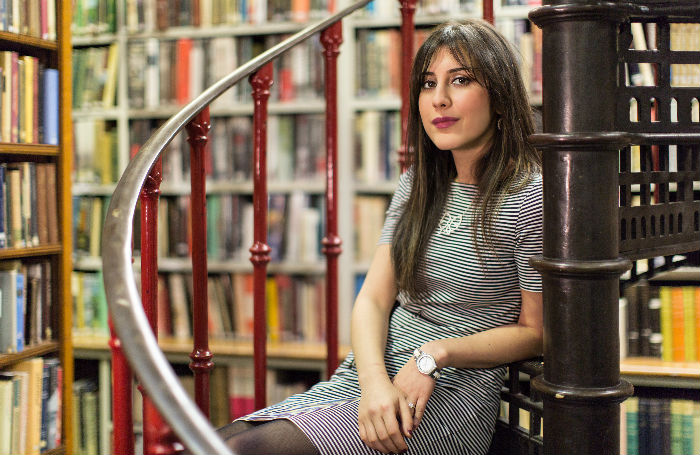Maral studied for her Part 1 at the University of Lincoln before undertaking her first year placement at Medical Architecture who then sponsored her for her Part 2 qualification at Northumbria University and Part 3 examination at RIBA Northwest. In 2009, she was also supported by Northumbria University and received further sponsorship by RIBA Northeast to travel to Kenya to work on a voluntary building project in one of the rural villages. Maral qualified as an Architect in April 2013 and she now works at xsite architecture in Newcastle-upon-Tyne where she is working on a residential project in Ouseburn - Newcastle.

As a child I was very curious about colour and design – I remember my uncle had the most wonderful colouring pencils and paper, which he locked away in a glass box. Even though I couldn’t touch them, I would still go and stare at them through the glass. The idea of becoming an architect didn’t cross my mind until much later but the instinct was there.
My parents did everything in their power to change our life circumstances so that my brother and I had as many opportunities as possible. I couldn’t be any more grateful to them. That’s not to say we had a bad life in Iran, but I don’t think I could be the person I am today if we hadn’t moved to the UK and been exposed to different cultures and ways of life. I’m pretty sure I wouldn’t have become an architect without this experience.
We came to Newcastle and school was difficult at first. No amount of English lessons could have prepared me for a Geordie accent! I was one of only a few foreign kids at the school and there was some bullying but I was grown-up enough not to let it get to me too much. I don’t blame the bullies; it was because of their lack of exposure to things that were out of the norm, and the events of 9/11 didn’t help. Fortunately I had supportive teachers and friends – so eventually it passed.
That school situation illustrates the limitations that can come from a lack of diversity. Anyone from a different culture or background brings something different to the table. In an architectural context, you want your designs to be as good as possible – and not the same as everyone else’s, so you need to seek out difference. Diversity is not just about being nice to people, it’s about creativity.
My art teachers, my tutor at university, my mentor at my last practice and my current boss have all made an impact in my career and the way I see myself growing in my profession
You can make the most of diversity by asking lots of good questions. For example, if you asked me about my childhood, I could describe my grandmother’s home. She lives in one of the oldest houses in Rasht, which is in the north of Iran near the Caspian Sea. It has this massive courtyard, with sunlight coming in and a little pond in the middle. This image takes you deep into my experience – right down to the texture of the walls. As an architect I want to hear my clients’ and colleagues’ stories to stimulate my ideas. It’s about enquiring and curiosity – but often people don’t ask the questions.
I see everyday role models as being the most important of all. My art teachers, my tutor at university, my mentor at my last practice and my current boss have all made an impact in my career and the way I see myself growing in my profession. They aren’t famous – they are just ordinary, accessible individuals who have a positive influence on those around them.
These people affected my career in simple but vital ways. One wrote to the Dean of my university to resolve a fees issue, another bothered to send texts to thank me for my work and my boss actively encourages me to be ambitious. I try to follow their example and make time for others too, especially people who are new to the profession and perhaps finding things a bit daunting.
I see architecture as a community, it affects me so I want to be part of it and contribute. I don’t agree with those who say ‘I can’t be bothered to get involved’. I want to have an impact
I think architecture is an incredible profession to be part of - you’re creating things that people experience and live within. The biggest high I’ve had was seeing my first building rise out of the ground. It wasn’t a building that would be seen or experienced by many: it was a medium secure mental health unit within a hospital. But it was my building and it was special.
I see architecture as a community, it affects me so I want to be part of it and contribute. I am involved in the different debates taking place, whether within the RIBA or even about the role of the RIBA. These discussions influence the business you’re working in and your everyday life – so I don’t agree with those who say ‘I can’t be bothered to get involved’. I want to have an impact.









